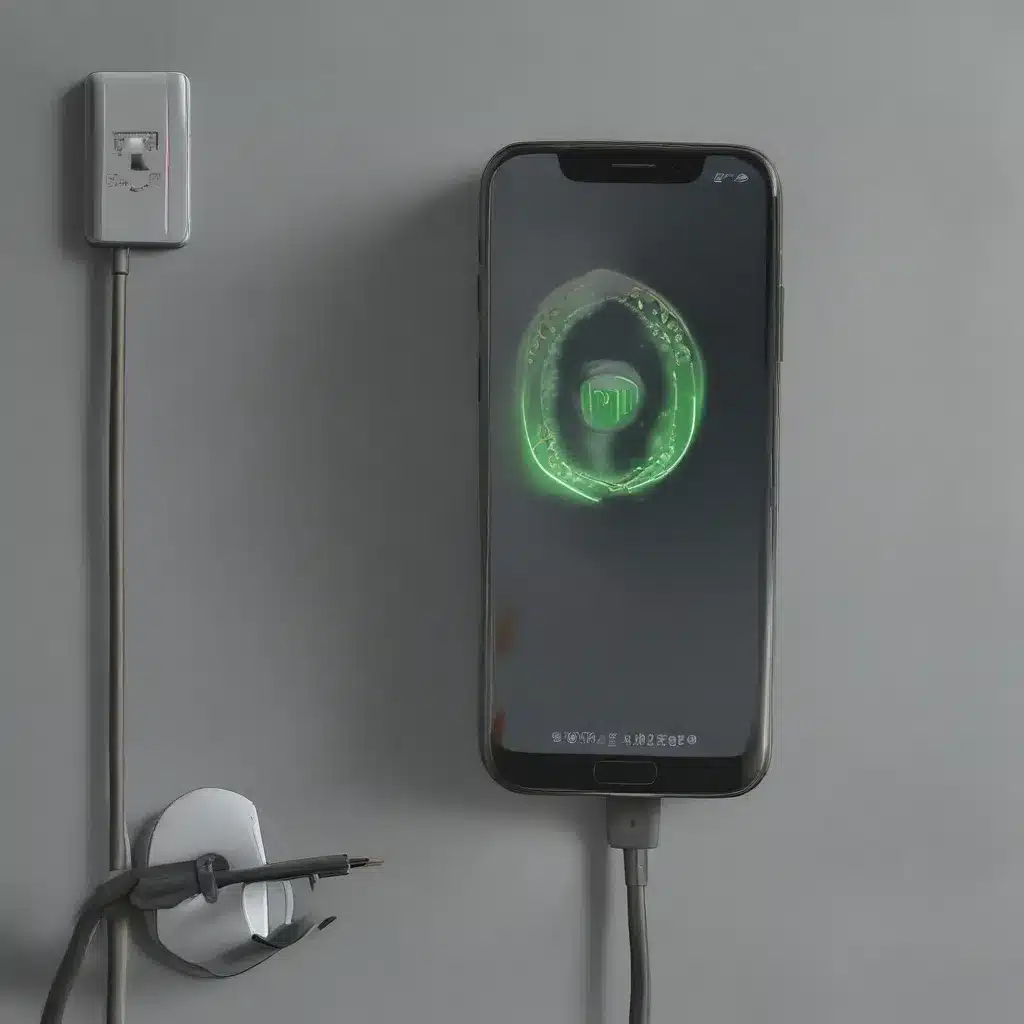
Wireless Charging: The Double-Edged Sword
Ah, the allure of wireless charging – no more tangled cables, no more frantic search for the right adapter. It’s the modern-day convenience that we all crave, right? Well, not so fast. As with any technological advancement, there’s a catch. And when it comes to wireless charging, the potential for damage to your beloved device is a very real concern.
As someone who’s been down the wireless charging rabbit hole, let me share a cautionary tale or two. Picture this: You’re happily nestled on the couch, phone in hand, completely engrossed in your scrolling session. Suddenly, a low battery warning pops up, and you scramble to find the nearest wireless charging pad. You plop your phone down, confident that your battery woes are about to be a thing of the past.
But then, disaster strikes. The next time you pick up your device, you notice a worrying sign – the screen is cracked, and the casing feels slightly warped. What happened, you wonder? Well, my friend, the culprit could very well be that trusty wireless charging pad you just used.
The Perils of Wireless Charging
You see, wireless charging, while undeniably convenient, can also be a double-edged sword. If you’re not careful, it can wreak havoc on your device, leading to everything from overheating and battery degradation to more severe issues like screen damage and even device failure.
It all comes down to the delicate balance of heat management. Wireless charging, by its very nature, generates more heat than traditional wired charging. This heat buildup can have some nasty consequences if left unchecked. For starters, it can cause your phone’s internal components to overheat, leading to premature battery wear and tear. Over time, this can drastically reduce the lifespan of your device’s battery, leaving you with a less reliable power source.
But wait, there’s more! The excess heat can also cause the physical structure of your phone to warp and deform, resulting in unsightly cracks and damage to the screen and casing. Imagine the horror of picking up your beloved device only to find a spider web of cracks staring back at you. Not a pretty sight, I can assure you.
Avoiding the Wireless Charging Pitfalls
Okay, now that I’ve thoroughly terrified you about the perils of wireless charging, let’s talk about how you can avoid these pitfalls and enjoy the convenience without the headaches.
First and foremost, it’s crucial to invest in a high-quality wireless charging device. Cheap, off-brand chargers may seem like a bargain, but they’re often manufactured without proper quality control measures, putting your device at risk. Stick to certified, premium-quality wireless chargers like the Bezalel Prelude, which are designed to prevent overheating and damage.
Another important tip? Avoid charging your phone wirelessly while it’s in use. Running power-hungry apps or keeping the screen on while charging can exacerbate the heat buildup, leading to those dreaded issues we discussed earlier. Instead, charge your phone wirelessly when it’s not in use, like overnight or while you’re at work.
And let’s not forget about the age-old advice of keeping your phone’s battery between 40-80% to maximize its lifespan. This is just as important for wireless charging as it is for traditional wired charging. Overcharging can put unnecessary stress on the battery, leading to faster degradation.
The Wireless Charging Renaissance: Embrace It Safely
Now, I know what you’re thinking: “But itFix, what if I really need to charge my phone wirelessly while I’m using it? Is there no hope for me?” Fear not, my friend. There are ways to do it safely, even if you can’t resist the temptation to stay connected while your device is juicing up.
The key is to ensure proper ventilation and cooling. Avoid charging your phone on a wireless pad that’s trapped in a tight, enclosed space, like between the couch cushions or under a pile of papers. Give your device some breathing room, and consider using a wireless charging stand that keeps it upright and well-ventilated.
And if you’re the type who likes to keep their phone on the nightstand while they sleep, make sure to remove any case or cover before placing it on the wireless charger. The extra layer can trap heat and cause all sorts of problems.
So, there you have it – my hard-won wisdom on navigating the world of wireless charging. It’s a powerful tool, to be sure, but one that requires a delicate touch. Follow these tips, and you can enjoy the convenience of wireless charging without the risk of damaging your beloved device. Happy (and safe) charging, folks!












